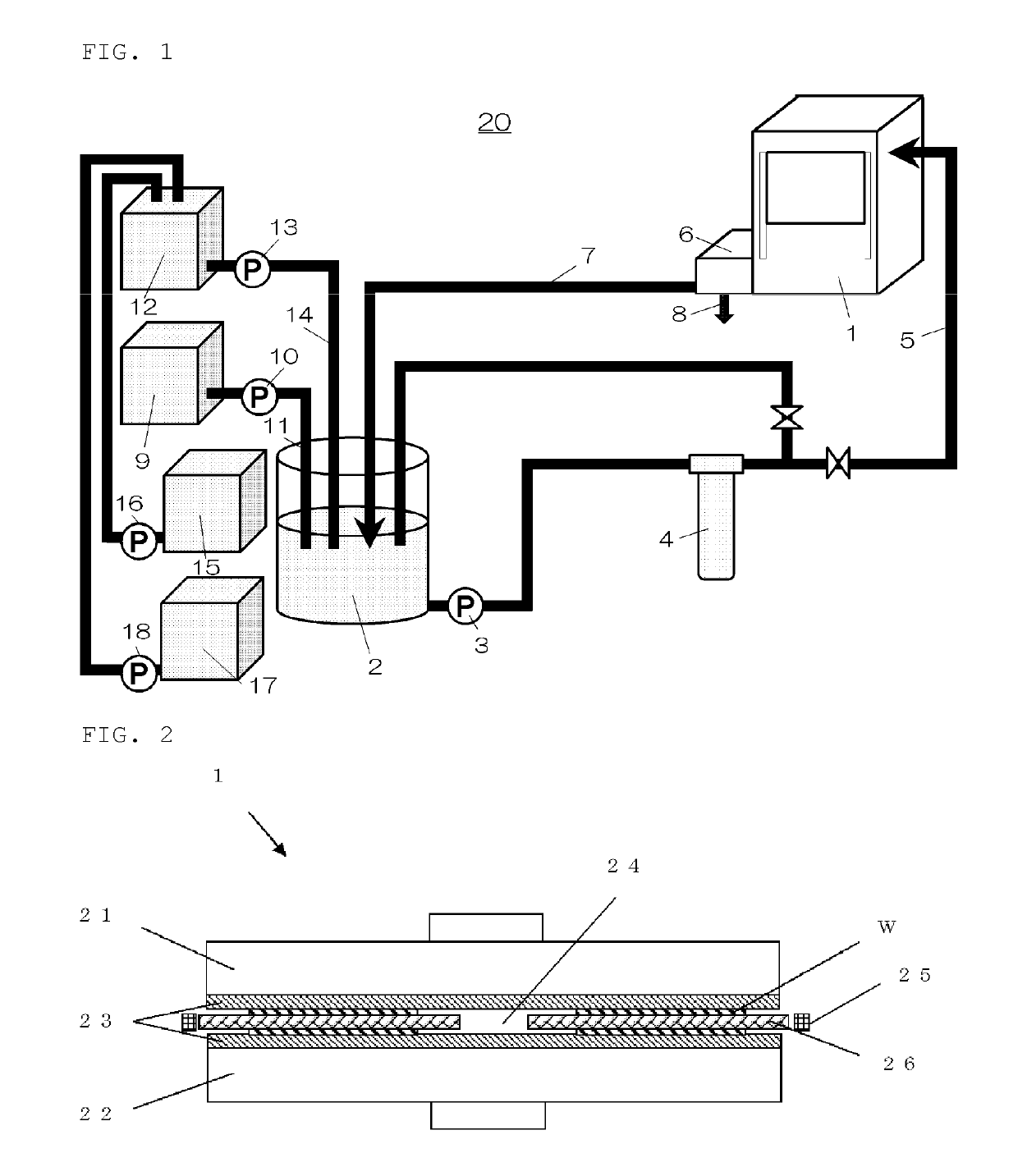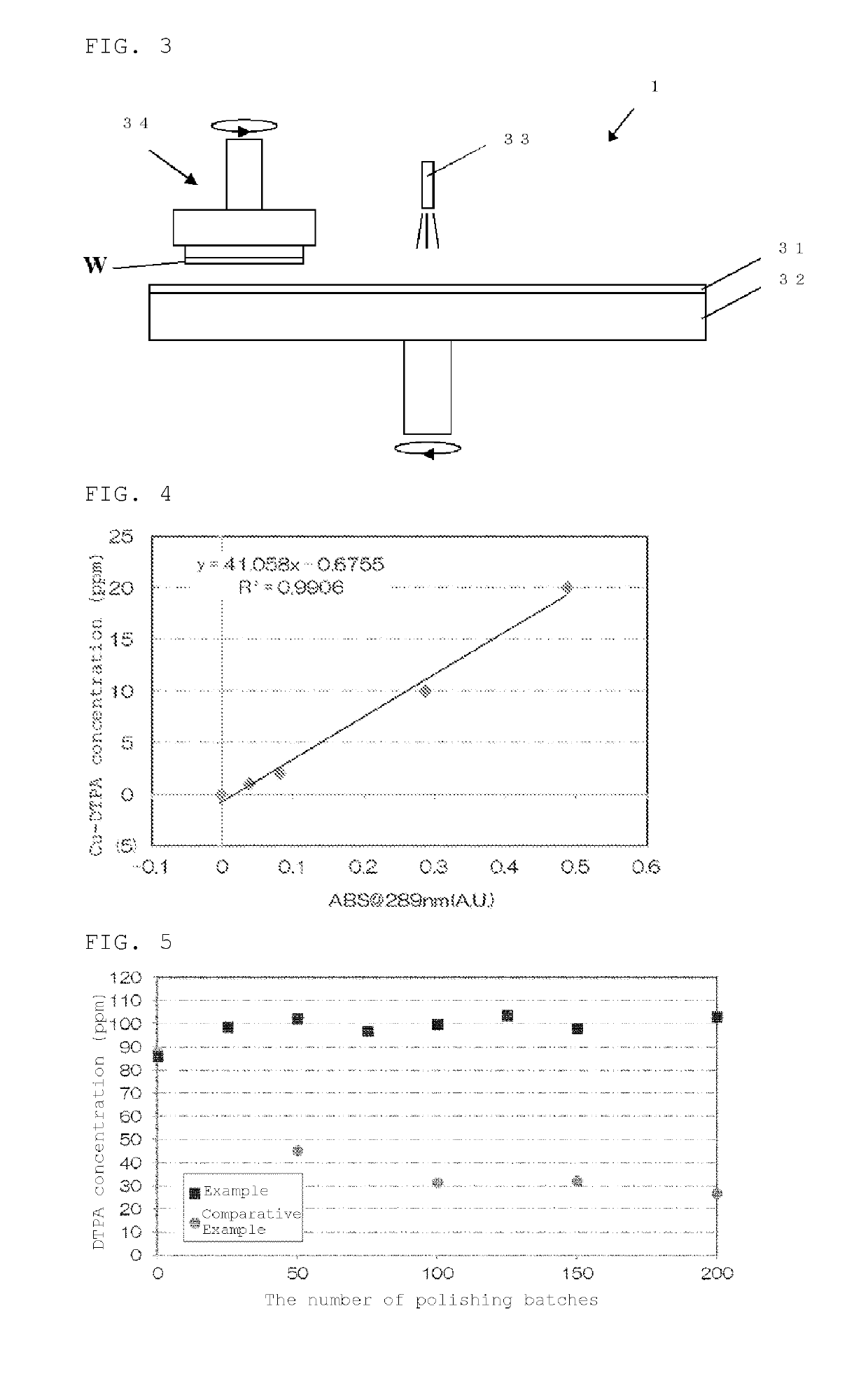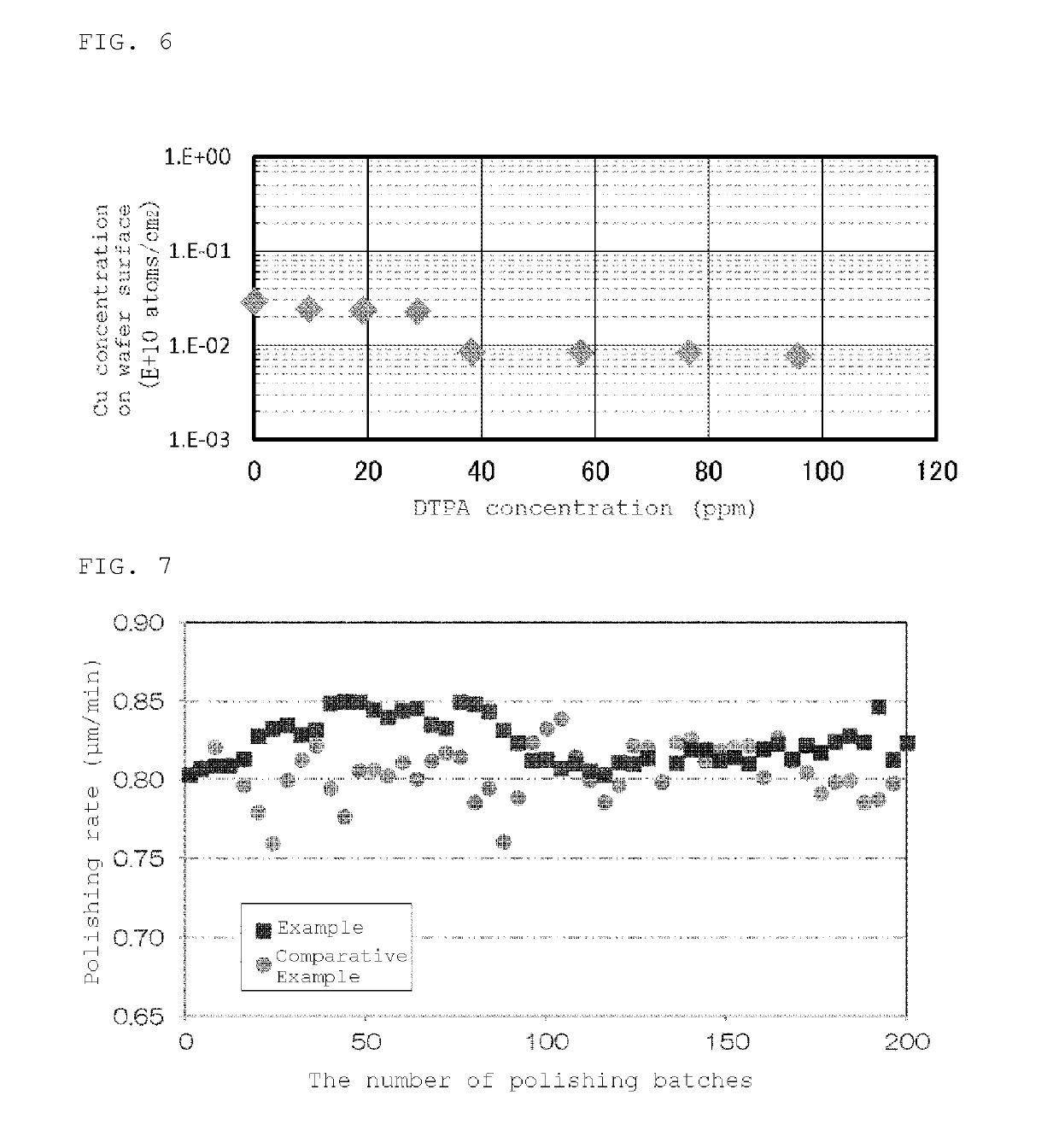Method for polishing silicon wafer
a technology of silicon wafer and polishing method, which is applied in the direction of grinding/polishing apparatus, manufacturing tools, lapping machines, etc., can solve the problems of reducing the characteristics of a semiconductor device formed by the wafer, affecting the polishing rate, so as to and reduce the occurrence of impurity contamination
- Summary
- Abstract
- Description
- Claims
- Application Information
AI Technical Summary
Benefits of technology
Problems solved by technology
Method used
Image
Examples
example
[0072]Both surfaces of silicon wafers were polished by a slurry recycling system 20 as shown in FIG. 1, according to the method for polishing a silicon wafer of the present invention. In this example, a 20B double-side polishing apparatus manufactured by Fujikoshi Machinery Corp., was used as the polishing apparatus 1. A urethane foam pad was used as the polishing pad, and 200 g / cm2 of surface pressure was applied to the silicon wafer during polishing. The polishing amount was 20 μm in total of both surfaces. Under such polishing conditions, five silicon wafers with a diameter of 300 mm were polished in one batch, and 200 polishing batches were successively carried out.
[0073]The initial slurry was created in the following manner. First, commercially available high-purified colloidal silica with a primary particle size of 0.035 μm (silica concentration: 20 mass %) was prepared in the polishing abrasive grain supplying tank 9, and diluted with pure water in the slurry supplying tank 2...
PUM
| Property | Measurement | Unit |
|---|---|---|
| diameter | aaaaa | aaaaa |
| thickness | aaaaa | aaaaa |
| diameter | aaaaa | aaaaa |
Abstract
Description
Claims
Application Information
 Login to View More
Login to View More - R&D
- Intellectual Property
- Life Sciences
- Materials
- Tech Scout
- Unparalleled Data Quality
- Higher Quality Content
- 60% Fewer Hallucinations
Browse by: Latest US Patents, China's latest patents, Technical Efficacy Thesaurus, Application Domain, Technology Topic, Popular Technical Reports.
© 2025 PatSnap. All rights reserved.Legal|Privacy policy|Modern Slavery Act Transparency Statement|Sitemap|About US| Contact US: help@patsnap.com



